|
When
I think of Scotland, I think of bagpipes, great hairy men in skirts throwing
tree trunks about and the Loch Ness
Monster. Then I think of William
Wallace, castles, the incredible beauty of the Highlands, thistles and snow. If you
think of any of these things, we're singing on the same hymn sheet.
Scotland
is also famous for its inventors. This country can boast a very high
proportion of inventions per capita, such as John
Logie Baird and the television . Maybe not so much today, but there it
is. The Scots also score highly with literature. One of the most famous sons
of Scotland was Robert Louis
Stevenson with his brilliant tale of pirates
and the sea in Treasure
Island. The latest up and coming Scots writer is Jameson
Hunter, descended from the Hunter clan in Argyl.
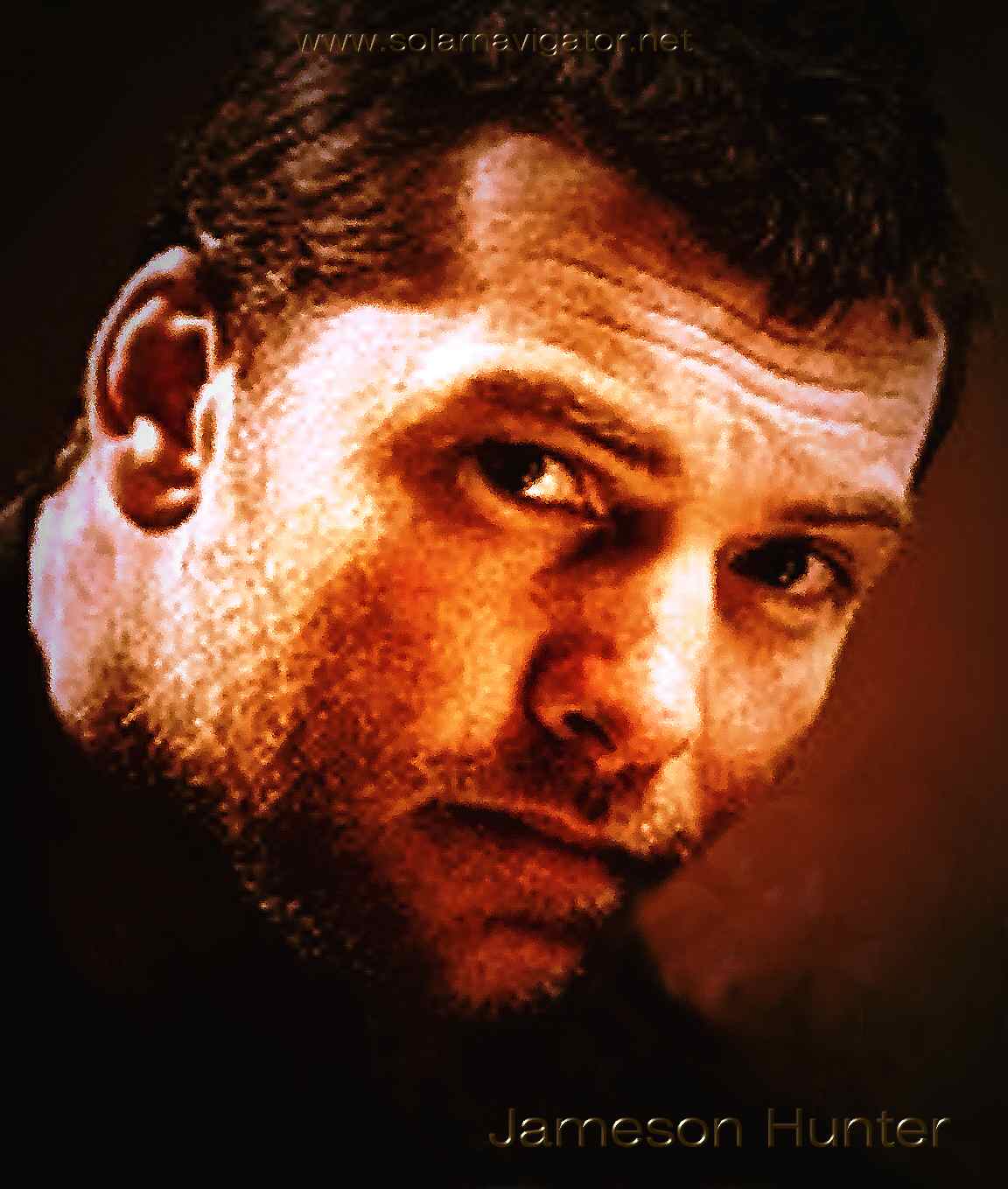
Scotland
(and Ireland) churns out a good proportion of the character actors finding
their way to Hollywood, such as Liam
Neeson, James
Mcavoy and Gerard
Butler - some of my modern favourites.
Scotland
is (sometimes grudgingly) a part of the United
Kingdom. Occupying the northern third of Great Britain, it shares a border with England to the south and is bounded by the North Sea to the east, the Atlantic Ocean to the north and west, and the North Channel and Irish Sea to the southwest. In addition to the mainland, Scotland constitutes over 790
islands including the Northern Isles and the Hebrides and I'd like one to
myself.
Edinburgh, the country's capital and second largest city, is one of Europe's largest financial
centres. Edinburgh was the hub of the Scottish Enlightenment of the 18th century, which transformed Scotland into one of the commercial, intellectual and industrial powerhouses of Europe. Glasgow, Scotland's largest
city, was once one of the world's leading industrial cities and now lies at the centre of the Greater Glasgow conurbation. Scottish waters consist of a large
sector of the North Atlantic and the North Sea, containing the largest oil reserves in the
European Union. This has given Aberdeen, the third largest city in Scotland, the title of Europe's oil
capital.
The Kingdom of Scotland emerged as an independent sovereign state in the Early Middle Ages and continued to exist until 1707, although it had been in a personal union with the kingdoms of England and Ireland since James VI of Scotland succeeded to the English and Irish thrones in 1603. On 1 May 1707, Scotland entered into an incorporating political union with England to create the united Kingdom of Great
Britain. This union resulted from the Treaty of Union agreed in 1706 and enacted by the twin Acts of Union passed by the Parliaments of both countries, despite anti-union riots in Edinburgh, Glasgow and
elsewhere.
Scotland's legal system continues to be separate from those of England and Wales and Northern Ireland, and Scotland constitutes a distinct jurisdiction in public and in private
law. The continued existence of legal, educational and religious institutions distinct from those in the remainder of the UK have all contributed to the continuation of Scottish culture and national identity since the
Union. In 1999, a devolved legislature, the Scottish Parliament, was reconvened with authority over many areas of home affairs following a successful referendum in 1997. In 2011, the Scottish National Party (SNP) won an overall majority in parliament and intends to hold a referendum on
independence in the autumn of 2014.
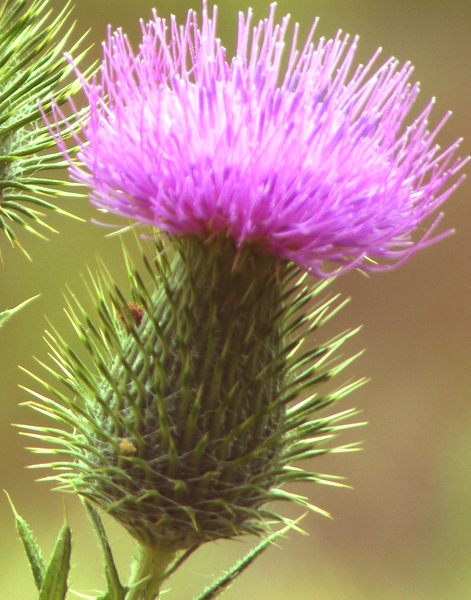
EARLY
HISTORY
Repeated glaciations, which covered the entire land mass of modern Scotland, destroyed any traces of human habitation that may have existed before the Mesolithic period. It is believed that the first post-glacial groups of hunter-gatherers arrived in Scotland around 12,800 years ago, as the ice sheet retreated after the last
glaciation.
Groups of settlers began building the first known permanent houses on Scottish soil around 9500 years ago, and the first villages around 6000 years ago. The well-preserved village of Skara Brae on the Mainland of Orkney dates from this period.
Neolithic habitation, burial and ritual sites are particularly common and well-preserved in the Northern Isles and Western Isles, where a lack of trees led to most structures being built of local
stone.
The discovery in Scotland of a 4000 year old tomb with burial treasures at Forteviot, near Perth, the capital of a Pictish Kingdom in the 8th and 9th centuries AD, is unrivalled anywhere in Britain. It contains the remains of an early Bronze Age ruler laid out on white quartz pebbles and birch bark. It was also discovered for the first time that early Bronze Age people placed flowers in their
graves.
Scotland may have been part of a Late Bronze Age maritime trading culture called the Atlantic Bronze Age that also included the other Celtic nations, and the areas that would become England, France, Spain and Portugal.
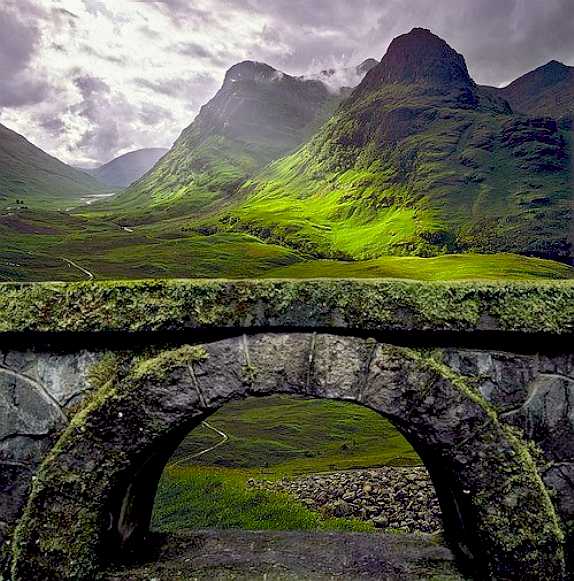
POLITICS
Scotland's head of state is the monarch of the United Kingdom, currently Queen Elizabeth II (since 1952). The title Elizabeth II caused controversy around the time of the queen's coronation, as there had never been an Elizabeth I in Scotland. A legal case, MacCormick v. Lord Advocate (1953 SC 396), was taken to contest the right of the Queen to title herself Elizabeth II within Scotland, arguing that to do so would be a breach of Article 1 of the Treaty of Union.
The Lord Advocate won the case and it was decided that future British monarchs would be numbered according to either their English or Scottish predecessors, whichever number is
higher. Hence, any future King James would be styled James VIII (since the last Scottish King James was James VII (also James II of England,
etc.) while the next King Henry would be King Henry IX throughout the UK despite the fact that there have been no Scottish kings of the name.
Scotland has partial self-government within the United Kingdom as well as representation in the UK Parliament. Executive and legislative powers have been devolved to, respectively, the Scottish Government and the Scottish Parliament at Holyrood in Edinburgh. The United Kingdom Parliament retains power over a set list of areas explicitly specified in the Scotland Act 1998 as reserved matters, including, for example, levels of UK taxes, social security, defence, international relations and
broadcasting.
The Scottish Parliament has legislative authority for all other areas relating to Scotland, as well as limited power to vary income tax. Former Prime Minister
Gordon Brown, in a BBC Scotland interview, indicated that the Scottish Parliament could be given more tax-raising
powers.
The Scottish Parliament can give legislative consent over devolved matters back to Westminster by passing a Legislative Consent Motion if United Kingdom-wide legislation is considered to be more appropriate for a certain issue. The programmes of legislation enacted by the Scottish Parliament have seen a divergence in the provision of public services compared to the rest of the United Kingdom. For instance, the costs of a university education, and care services for the elderly are free at point of use in Scotland, while fees are paid in the rest of the UK. Scotland was the first country in the UK to ban smoking in enclosed public
places.
The Scottish Parliament is a unicameral legislature comprising 129 Members, 73 of whom represent individual constituencies and are elected on a first past the post system; 56 are elected in eight different electoral regions by the additional member system, serving for a four year period. The
Queen appoints one Member of the Scottish Parliament, (MSP), on the nomination of the Parliament, to be First Minister. Other Ministers are also appointed by the First Minister and serve at his/her discretion, together they make up the Scottish Government, the executive arm of
government.
In the 2011 election, the Scottish National Party (SNP) formed a majority government after winning 69 of the 129 seat Parliament; This was the first majority government since the modern post-devolutionary Scottish Parliament was established in 1999. The leader of the SNP, Alex Salmond, continued as First Minister. The
Labour Party continued as the largest opposition party, with the
Conservative Party, the
Liberal
Democrats, and the Green Party also represented in the Parliament. Margo MacDonald is the only independent MSP sitting in Parliament. The next Scottish Parliament general election will be held on 5 May 2016. The Scotland Bill, put forward by the Calman Commission and cleared by the UK House of Commons, proposes devolving more power to Scotland. The bill has yet to be put into legislation. The Scottish National Party, who did not take part in the consultation, believe the bill does not devolve enough powers to the Scottish
Parliament.
Scotland is represented in the British House of Commons by 59 MPs elected from territory-based Scottish constituencies. The Scotland Office represents the UK government in Scotland on reserved matters and represents Scottish interests within the UK
government. The Scotland office is led by the Secretary of State for Scotland, who sits in the Cabinet of the United Kingdom, the current incumbent being Michael Moore.
GEOGRAPHY
The mainland of Scotland comprises the northern third of the land mass of the island of Great Britain, which lies off the northwest coast of Continental Europe. The total area is 78,772 km2 (30,414 sq
mi), comparable to the size of the Czech Republic. Scotland's only land border is with England, and runs for 96 kilometres (60 mi) between the basin of the River Tweed on the east coast and the Solway Firth in the west. The Atlantic Ocean borders the west coast and the North Sea is to the east. The island of Ireland lies only 30
kilometres (19 mi) from the southwestern peninsula of
Kintyre; Norway is 305 kilometres (190 mi) to the east and the Faroes, 270 kilometres (168 mi) to the north.
The territorial extent of Scotland is generally that established by the 1237 Treaty of York between Scotland and the Kingdom of
England and the 1266 Treaty of Perth between Scotland and Norway. Important exceptions include the Isle of Man, which having been lost to England in the 14th century is now a crown dependency outside of the United Kingdom; the island groups Orkney and Shetland, which were acquired from Norway in
1472; and Berwick-upon-Tweed, lost to England in 1482.
The geographical centre of Scotland lies a few miles from the village of Newtonmore in
Badenoch. Rising to 1,344 metres (4,409 ft) above sea level, Scotland's highest point is the summit of Ben Nevis, in Lochaber, while Scotland's longest river, the River Tay, flows for a distance of 190 kilometres (118
mi).
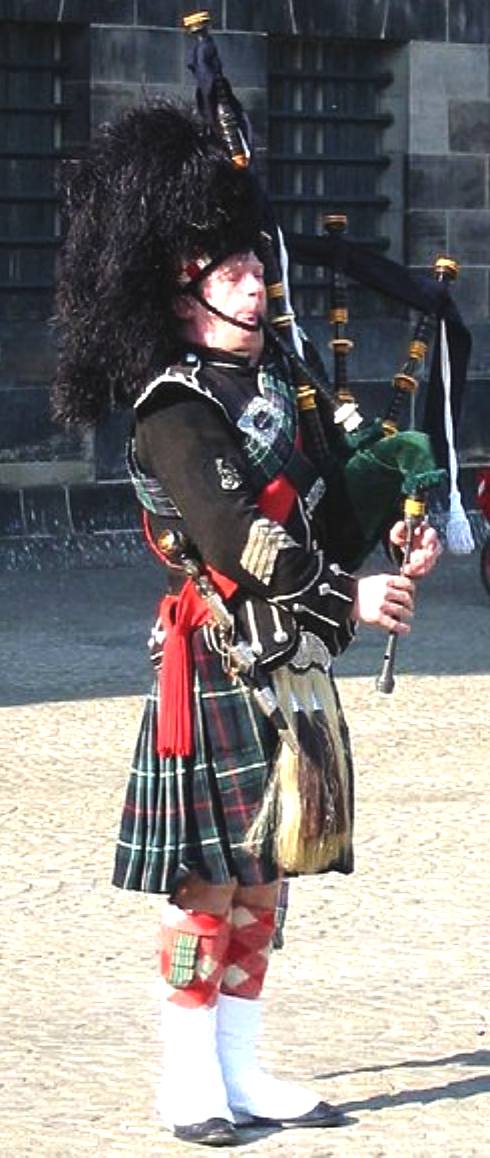
GEOLOGY
and GEOMORPHOLOGY
The whole of Scotland was covered by ice sheets during the Pleistocene ice ages and the landscape is much affected by
glaciation. From a geological perspective the country has three main sub-divisions.
The Highlands and Islands lie to the north and west of the Highland Boundary Fault, which runs from Arran to Stonehaven. This part of Scotland largely comprises ancient rocks from the Cambrian and Precambrian, which were uplifted during the later Caledonian Orogeny. It is interspersed with igneous intrusions of a more recent age, the remnants of which have formed mountain massifs such as the Cairngorms and Skye
Cuillins.
A significant exception to the above are the fossil-bearing beds of Old Red Sandstones found principally along the Moray Firth coast. The
Highlands are generally mountainous and the highest elevations in the British Isles are found here. Scotland has over 790 islands, which are divided into four main groups: Shetland, Orkney, and the Inner Hebrides and Outer Hebrides. There are numerous bodies of freshwater including Loch Lomond and Loch Ness. Some parts of the coastline consist of machair, a low lying dune pasture land.
The Central Lowlands is a rift valley mainly comprising Paleozoic formations. Many of these sediments have economic significance for it is here that the
coal and iron bearing rocks that fuelled Scotland's industrial revolution are to be found. This area has also experienced intense
volcanism, Arthur’s Seat in Edinburgh being the remnant of a once much larger volcano. This area is relatively low-lying, although even here hills such as the Ochils and Campsie Fells are rarely far from view.
The Southern Uplands are a range of hills almost 200 kilometres (124 mi) long, interspersed with broad valleys. They lie south of a second fault line (the Southern Uplands fault) that runs from Girvan to
Dunbar. The geological foundations largely comprise Silurian deposits laid down some 4–500 million years ago. The high point of the Southern Uplands is Merrick with an elevation of 843 m (2,766
ft). The Southern Uplands is home to the UK's highest village, Wanlockhead (430 m/1,411 ft above sea
level).
CLIMATE
The climate of Scotland is temperate and oceanic, and tends to be very changeable. It is warmed by the Gulf Stream from the
Atlantic, and as such has much milder winters (but cooler, wetter summers) than areas on similar latitudes, for example Labrador, southern Scandinavia, the Moscow region in Russia, or the Kamchatka Peninsula on the opposite side of Eurasia. However, temperatures are generally lower than in the rest of the UK, with the coldest ever UK temperature of −27.2 °C (−16.96 °F) recorded at Braemar in the Grampian Mountains, on 11 February
1895. Winter maximums average 6 °C (42.8 °F) in the lowlands, with summer maximums averaging 18 °C (64.4 °F). The highest temperature recorded was 32.9 °C (91.22 °F) at Greycrook, Scottish Borders on 9 August
2003.
In general, the west of Scotland is usually warmer than the east, owing to the influence of Atlantic ocean currents and the colder surface temperatures of the North Sea. Tiree, in the Inner Hebrides, is one of the sunniest places in the country: it had more than 300 hours of sunshine in May
1975. Rainfall varies widely across Scotland. The western highlands of Scotland are the wettest place, with annual
rainfall exceeding 3,000 mm (118.1
in). In comparison, much of lowland Scotland receives less than 800 mm (31.5 in)
annually. Heavy snowfall is not common in the lowlands, but becomes more common with altitude. Braemar experiences an average of 59 snow days per
year, while many coastal areas average fewer than 10 days of lying snow per
annum.
FLORA
and FAUNA
Scotland's wildlife is typical of the north west of Europe, although several of the larger mammals such as the lynx, brown bear, wolf, elk and walrus were hunted to extinction in historic times. There are important populations of seals and internationally significant nesting grounds for a variety of seabirds such as
gannets. The golden eagle is something of a national icon.
On the high mountain tops species including ptarmigan, mountain hare and stoat can be seen in their white colour phase during winter
months. Remnants of the native Scots pine forest exist and within these areas the Scottish crossbill, the UK's only endemic bird species and vertebrate, can be found alongside capercaillie, wildcat, red squirrel and pine
marten. In recent years various animals have been re-introduced, including the white-tailed sea
eagle in 1975, the red kite in the
1980s, and more recently there have been experimental projects involving the beaver and wild
boar.
The flora of the country is varied incorporating both deciduous and coniferous woodland and moorland and tundra species. However, large scale commercial tree planting and the management of upland moorland habitat for the grazing of sheep and commercial field sport activities impacts upon the distribution of indigenous plants and
animals. The UK's tallest tree is a grand fir planted beside Loch Fyne, Argyll in the 1870s, and the Fortingall Yew may be 5,000 years old and is probably the oldest living thing in
Europe. Although the number of native vascular plants is low by world standards, Scotland's substantial bryophyte flora is of global importance.
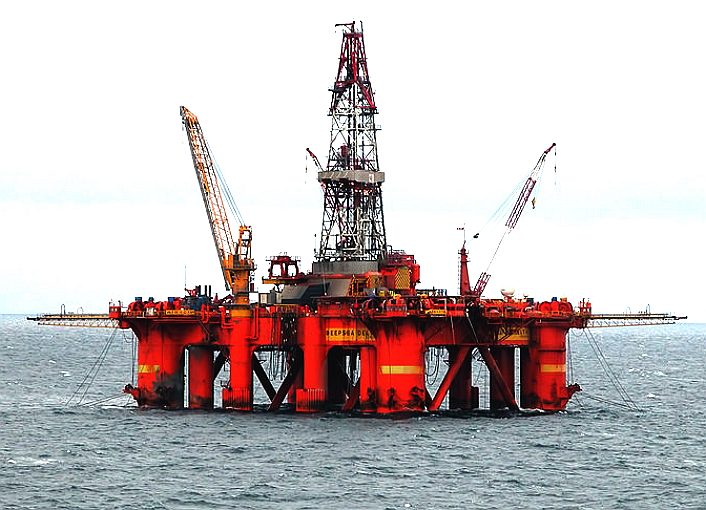
On
of many North Sea oil platform drilling rigs, that provide so much income to
the United Kingdom. A change to sustainable energy is long overdue, once the
oil barons have milked the system for as long as the Government will let
them.
ECONOMY
Scotland has a western style open mixed economy that is closely linked with the rest of Europe and the wider world. Traditionally, the Scottish economy has been dominated by heavy industry underpinned by the
shipbuilding in Glasgow, coal mining and steel industries.
Petroleum related industries associated with the extraction of North Sea oil have also been important employers from the 1970s, especially in the north east of Scotland.
De-industrialisation during the 1970s and 1980s saw a shift from a manufacturing focus towards a more service-oriented economy. Edinburgh is the financial services centre of Scotland and the sixth largest financial centre in Europe in terms of funds under management, behind
London, Paris, Frankfurt, Zurich and
Amsterdam, with many large finance firms based there, including: Lloyds Banking Group (owners of the Halifax Bank of Scotland); the Government owned Royal Bank of Scotland and Standard Life.
The renewable energy industry is an important part of the Scottish economy. In 2005, total Scottish exports (excluding intra-UK trade) were provisionally estimated to be £17.5 billion, of which 70% (£12.2 billion) were attributable to
manufacturing. Scotland's primary exports include whisky, electronics and financial services. The
United States, Netherlands, Germany, France and
Spain constitute the country's major export markets. Scotland's Gross Domestic Product (GDP), including
oil and gas produced in Scottish waters, was estimated at £137.5
billion for the calendar year
2009. If Scotland became independent, it would hold 90% of the UK's current oil and gas reserves if they were split geographically using a median line from the English-Scottish border. If the reserves were to be split by population, that figure would be reduced to
9%.
Tourism is widely recognised as a key contributor to the Scottish economy. A briefing published in 2002 by the Scottish Parliament Information Centre, (SPICe), for the Scottish Parliament's Enterprise and Life Long Learning Committee, stated that tourism accounted for up to 5% of GDP and 7.5% of
employment.
As of May 2009 the unemployment rate in Scotland stood at 6.6%— slightly lower than the UK average and lower than that of the majority of EU
countries. The Scottish Government's most recent figures (for 2009/10) suggest that Scotland's finances are in a healthier state than for the UK as a whole, with Scotland contributing 9.4% of UK
taxes but receiving 9.3% of public expenditure.
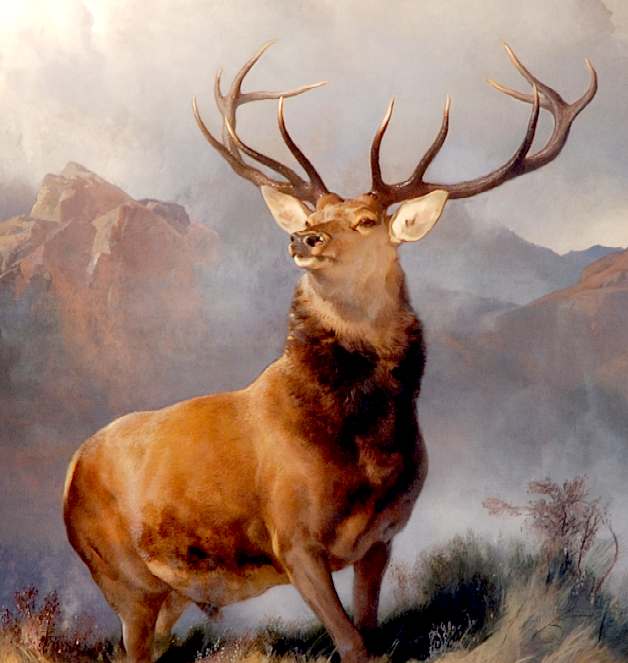
The Monarch of the Glen is an oil-on-canvas painting from 1851 by the English painter Sir Edwin Landseer, which was commissioned as part of a series of three panels to hang in the Palace of Westminster in London. It was one of the most popular paintings throughout the 19th century, and reproductions in steel engraving sold very widely, and the painting itself was finally bought by companies to use in advertising. The painting had become something of a cliché by the mid-20th century, as "the ultimate biscuit tin image of Scotland: a bulky stag set against the violet hills and watery skies of an isolated wilderness", according to the Sunday Herald.
DEMOGRAPHY
The population of Scotland in the 2001 Census was 5,062,011. This has risen to 5,222,100 according to June 2010
estimates. This would make Scotland the 113th largest country by population if it were a sovereign state. Although Edinburgh is the capital of Scotland it is not the largest city. With a population of just over 584,000, this honour falls to Glasgow. The Greater Glasgow conurbation, with a population of almost 1.2 million, is home to nearly a quarter of Scotland's
population.
The Central Belt is where most of the main towns and cities are located. Glasgow is to the west, while Edinburgh and Dundee lie on the east coast, with Perth (its city status restored in 2012) lying 20 miles upstream on the River Tay from Dundee. Scotland's only major city outside the Central Belt is Aberdeen, on the east coast to the north. The Highlands are sparsely populated, although the city of Inverness has experienced rapid growth in recent years.
In general only the more accessible and larger islands retain human populations, and fewer than 90 are currently inhabited. The Southern Uplands are essentially rural in nature and dominated by agriculture and
forestry. Because of housing problems in Glasgow and Edinburgh, five new towns were created between 1947 and 1966. They are East Kilbride, Glenrothes, Livingston, Cumbernauld, and
Irvine.
Following immigration since World War II, Glasgow, Edinburgh, and Dundee have small South Asian
communities. As of 2001, there were an estimated 31,793 Pakistanis living in Scotland, making them the single largest non-White ethnic
group. Since the recent Enlargement of the European Union more people from Central and Eastern Europe have moved to Scotland, and it is estimated that between 40,000 and 50,000 Poles now live
there. The ethnic groups within Scotland are as follows: White, 97.99%; South Asian, 1.09%; Black, 0.16%; Mixed, 0.25%; Chinese, 0.32% and Other, 0.19%.
Scotland has three officially recognised languages: English, Scots, and Scottish Gaelic. Almost all Scots speak Scottish English, and in 1996, the General Register Office for Scotland estimated that 30% of the population are fluent in
Scots. Gaelic is mostly spoken in the Western Isles, where a large proportion of people still speak it; however, nationally its use is confined to just 1% of the
population. The number of Gaelic speakers in Scotland dropped from 250,000 – 7% of the population – in 1881 to 60,000
today.
There are many more people with Scottish ancestry living abroad than the total population of Scotland. In the 2000 Census, 9.2 million Americans self-reported some degree of Scottish
descent. Ulster's Protestant population is mainly of lowland Scottish
descent, and it is estimated that there are more than 27 million descendants of the Scots-Irish migration now living in the
U.S. In Canada, the Scottish-Canadian community accounts for 4.7 million
people. About 20% of the original European settler population of New Zealand came from
Scotland.
In August 2012, the Scottish population had reached an all time high, reaching 5.25 million
people. The reason given was that in Scotland births were out numbering the number of Scottish deaths, and due to immigrants coming into Scotland from overseas. In 2011, 43,700 people moved from Wales, Northern Ireland or England to live in Scotland.
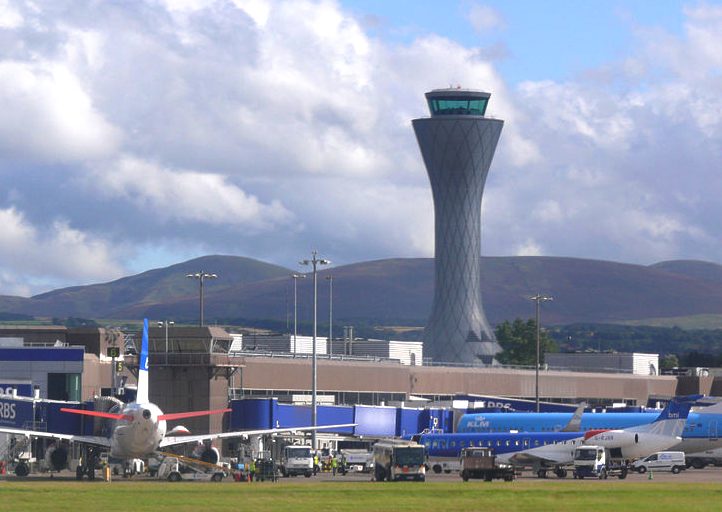
Edinburgh
airport
TRANSPORT
Scotland has five main international airports (Glasgow International, Edinburgh, Aberdeen, Glasgow Prestwick and Inverness), which together serve 150 international destinations with a wide variety of scheduled and chartered
flights. GIP operates Edinburgh airport and BAA Operates, (Aberdeen and Glasgow International), and Highland and Islands Airports operates 11 regional airports, including Inverness, which serve the more remote
locations. Infratil operates Glasgow Prestwick.
The Scottish motorways and major trunk roads are managed by Transport Scotland. The remainder of the road network is managed by the Scottish local authorities in each of their areas. Regular ferry services operate between the Scottish mainland and many islands. These ferries are mostly run by Caledonian MacBrayne, but some are operated by local councils. Other ferry routes, served by multiple companies, connect to Northern Ireland, Belgium, Norway, the Faroe Islands and also Iceland. Network Rail Infrastructure Limited owns and operates the fixed infrastructure assets of the railway system in Scotland, while the Scottish Government retains overall responsibility for rail strategy and funding in
Scotland. Scotland’s rail network has around 340 railway stations and 3000
kilometers of track. Over 62 million passenger journeys are made each year.
Scotland's rail network is managed by Transport
Scotland. The East Coast and West Coast main railway lines connect the major cities and towns of Scotland with each other and with the rail network in England. Domestic rail services within Scotland are operated by First ScotRail. During the time of
British Rail the West Coast Main Line from London Euston to Glasgow Central was
electrified in the early 1970s followed by the East Coast Main Line in the late 1980s. British Rail created the ScotRail brand. When British Rail existed many railway lines in Strathclyde were electrified with Strathclyde Passenger Transport Executive being at the forefront with the acclaimed: "The Largest electrified rail network outside London." Some parts of the network are electrified, but there are no electrified lines in the Highlands, Angus, Aberdeenshire, the cities of Dundee or Aberdeen, or Perth & Kinross, and none of the Islands have a rail link.
In addition, Glasgow has had a small integrated subway system since 1896. Completely gutted and modernised between 1977 and 1980, its 15 stations serve just under 40,000 passengers per day. There are plans to extensively refurbish the system in time for the 2014
Commonwealth Games.
The East Coast Main Line crosses the Firth of Forth by the Forth Bridge. Completed in 1890, this cantilever bridge has been described as "the one internationally recognised Scottish landmark".
CULTURE
Scottish music is a significant aspect of the nation's culture, with both traditional and modern influences. A famous traditional Scottish instrument is the Great Highland Bagpipe, a wind instrument consisting of three drones and a melody pipe (called the chanter), which are fed continuously by a reservoir of air in a bag. Bagpipe bands, featuring bagpipes and various types of drums, and showcasing Scottish music styles while creating new ones, have spread throughout the world. The clàrsach (harp), fiddle and accordion are also traditional Scottish instruments, the latter two heavily featured in Scottish country dance bands. Today, there are many successful Scottish bands and individual artists in varying styles including Runrig, Boards of Canada, Cocteau Twins, Franz Ferdinand and
Texas.
Scotland has a literary heritage dating back to the early Middle Ages. The earliest extant literature composed in what is now Scotland was in Brythonic speech in the 6th century, but is preserved as part of Welsh
literature. Later medieval literature included works in Latin, Gaelic, Old
English and French. The first surviving major text in Early Scots is the 14th century poet John Barbour's epic Brus, focusing on the life of Robert
I, and was soon followed by a series of vernacular romances and prose works. In the 16th century the crown's patronage helped the development of Scots drama and
poetry, but the accession of James VI to the English throne removed a major centre of literary patronage and Scots was sidelined as a literary
language.
Interest in Scots literature was revived in the 18th century by figures including James Macpherson, whose Ossian Cycle made him the first Scottish poet to gain an international reputation and was a major influence on the European
Enlightenment. It was also a major influence on Robert Burns, considered by many to be the national
poet, and Walter Scott, whose Waverley Novels did much to define Scottish identity in the 19th
century. Towards the end of the Victorian era a number of Scottish-born authors achieved international reputations as writers in English, including
Robert Louis Stevenson,
Arthur Conan Doyle, J. M. Barrie and George
MacDonald. In the 20th century the Scottish Renaissance saw a surge of literary activity and attempts to reclaim the Scots language as a medium for serious
literature. Members of the movement were followed by a new generation of post-war poets including Edwin Morgan, who would be appointed the first Scots Makar by the inaugural Scottish government in
2004. From the 1980s Scottish literature enjoyed another major revival, particularly associated with a group of writers including Irvine
Welsh. Scottish poets who emerged in the same period included Carol Ann Duffy, who was named as the first Scot to be UK Poet Laureate in May
2009.
Scottish theatre has for many years played an important role in Scottish society, from the music hall variety of Sir Harry Lauder and his contemporaries to the more serious plays put on at the Citizens Theatre in Glasgow and many other theatres throughout
Scotland.
Television in Scotland is largely the same as UK-wide broadcasts, however the national broadcaster is BBC Scotland, a constituent part of the
British Broadcasting Corporation, the publicly funded broadcaster of the United Kingdom. It runs three national television stations, and the national radio stations,
BBC Radio Scotland and BBC Radio nan Gaidheal, amongst others. Scotland also has some programming in the Gaelic language. BBC Alba is the national Gaelic-language channel. The main Scottish commercial television station is STV. National newspapers such as the Daily Record, The Herald, and The Scotsman are all produced in
Scotland. Important regional dailies include the Evening News in Edinburgh The Courier in Dundee in the east, and The Press and Journal serving Aberdeen and the
north. Scotland is represented at the Celtic Media Festival, which showcases film and television from the Celtic countries. Scottish entrants have won many awards since the festival began in
1980.
As one of the Celtic nations, Scotland and Scottish culture is represented at interceltic events at home and over the world. Scotland hosts several music festivals including Celtic Connections (Glasgow), and the Hebridean Celtic Festival (Stornoway). Festivals celebrating Celtic culture, such as Festival Interceltique de Lorient (Brittany), the Pan Celtic Festival (Ireland), and the National Celtic Festival (Portarlington, Australia), feature elements of Scottish culture such as language, music and dance.
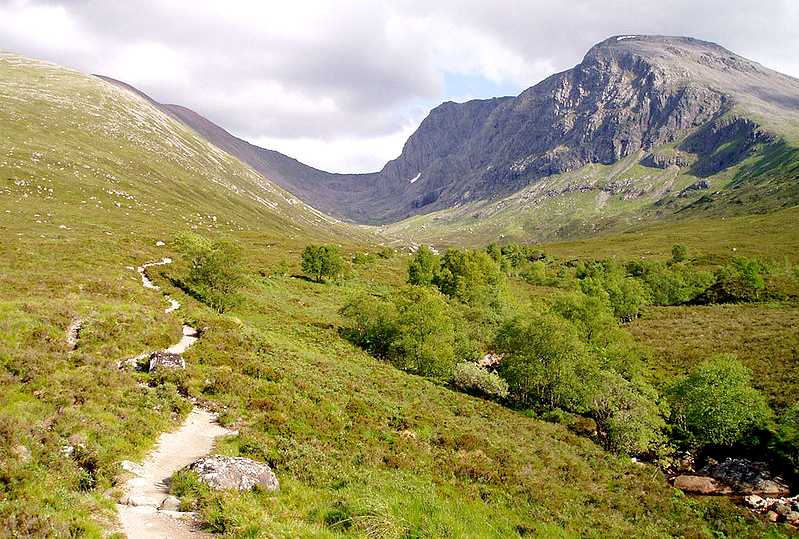
Ben
Nevis is the highest mountain in Scotland and the UK
SPORT
Sport is an important element in Scottish culture, with the country hosting many of its own national sporting competitions. It enjoys independent representation at many international sporting events including the
FIFA World Cup, the Rugby Union World Cup, the Rugby League World Cup, the Cricket World Cup and the Commonwealth Games, but not at the
Olympic Games where Scottish athletes are part of the Great Britain team. Scotland has its own national governing bodies, such as the Scottish Football Association (the second oldest national football association in the
world) and the Scottish Rugby Union. Variations of football have been played in Scotland for centuries with the earliest reference dating back to
1424. Association football is now the most popular sport and the Scottish Cup is the world's oldest national
trophy.
Scotland contested the first ever international football game in 1872, a 0–0 draw against England. The match took place at Hamilton Crescent, Glasgow, home of the West of Scotland
Cricket Club. Scottish clubs have been successful in European competitions with Celtic winning the
European Cup in 1967, Rangers and Aberdeen winning the UEFA Cup Winners' Cup in 1972 and 1983 respectively, and Aberdeen also winning the UEFA Super Cup in 1983. Dundee United have also made it to a European final, reaching the
UEFA Cup Final in 1987, but losing on aggregate 2-1 to IFK Göteborg.
The Fife town of St. Andrews is known internationally as the Home of
golf and to many golfers the Old Course, an ancient links course dating to before 1574, is considered to be a site of
pilgrimage. There are many other famous golf courses in Scotland, including Carnoustie, Gleneagles, Muirfield, and Royal Troon. Other distinctive features of the national sporting culture include the Highland games, curling and Shinty, which, given its arrival with the Gaelic language and the original Scottish culture from Ireland, can claim to be Scotland's national sport.
Scotland has competed at every Commonwealth Games since 1930 and have won 356 medal in total—91
Gold, 104 Silver and 161
Bronze. Scotland played host to the Commonwealth Games in 1970 and 1986, and will do so again in 2014 with Glasgow the host city.
SYMBOLS
The national flag of Scotland, known as the Saltire or St. Andrew's Cross, dates from the 9th century, and is thus the oldest national flag still in use. Since 1606 the Saltire has also formed part of the design of the Union Flag. There are numerous other symbols and symbolic
artifacts, both official and unofficial, including the thistle, the nation's floral emblem (celebrated in the song, The Thistle o' Scotland), 6 April 1320 statement of political independence the Declaration of Arbroath, the textile pattern tartan that often signifies a particular Scottish clan, and the
Lion Rampant
flag. Highlanders can thank James Graham, 3rd Duke of Montrose, for the repeal in 1782 of the Act of 1747 prohibiting the wearing of
tartans.
Although there is no official National anthem of Scotland, Flower of Scotland is played on special occasions and sporting events such as
football and rugby matches involving the Scotland national teams and as of 2010 is also played at the Commonwealth Games after it was voted the overwhelming favourite by participating Scottish
athletes. Other less popular candidates for the National Anthem of Scotland include Scotland the Brave, Highland Cathedral, Scots Wha Hae and A Man's A Man for A' That.
St Andrew's Day, 30 November, is the national day, although Burns' Night tends to be more widely observed, particularly outside Scotland. Tartan Day is a recent innovation from
Canada. In 2006, the Scottish Parliament passed the St. Andrew's Day Bank Holiday (Scotland) Act 2007, designating the day to be an official bank holiday.
LINKS
The
Guardian Scotland
Historic
Scotland
Scotland
Visit
Scotland
BBC
News Scotland
Wikipedia
Scotland
Scotland
Goverment
Wikipedia
The_Monarch_of_the_Glen
http://en.wikipedia.org/wiki/The_Monarch_of_the_Glen_%28painting%29
http://www.theguardian.com/uk/scotland
http://www.historic-scotland.gov.uk/
http://www.scotland.org/
http://www.visitscotland.com/
http://www.bbc.co.uk/news/scotland/
http://en.wikipedia.org/wiki/Scotland
http://www.scottish.parliament.uk/
http://www.scotland.gov.uk
|
Adelaide
Aden
- Yemen
Afghanistan
Africa
Alaska
Albania
Algeria
Amazon
Rainforest
Amsterdam
Antarctic
- Scott
Arctic
North Pole
Argentina
Asia
Athens
Atlantis
- Plato's Lost City
Australia
Austria
Aztecs
- Mexico
Baghdad
Bahamas
Bahrain
Bangladesh
Barbados
Beachy
Head, England
Belgium
Benin
Berlin
Bermuda
Black
Rock Desert
Bohemia
Bolivia Bonneville
Utah History
Bonneville,
Utah, USA
Brazil
Brighton
- West Pier
British
Columbia
Buckingham
Palace
Bulgaria
Burkina
Faso
Burma
California
Canada
Canary
Islands
Cape
Horn
Cape
Verde
Cape
York - Au
Caribbean
Cayman
Islands
Central
Africa
Chichester
Harbour
Chile
China
Columbo
- Sri Lanka
Columbia
Corfu
Cowes,
Isle of Wight
Croatia
Crooked
Island, Bahamas
Cuba
Cyprus
Czechoslovakia
Darwin
- Australia
Daytona
Beach
Denmark
Eastbounre
Pier, England
Earthquakes
Ecuador
Egypt
Eindhoven Estonia
Equator
Europe
Falkland
Islands
Falmouth,
Cornwall
Fiji
Finland
Florida
France
Galapagos
Islands
Geography
Links
Geography
Mountains
Geography
Records
Geography
Resources
Geography
Statistics
|
Germany
Ghana
Gibraltar
- Links
Greece
Greenland
Guinea
Guinea
Bissau
Hawaii
Holland
the Nertherlands
Hollywood,
California, LA
Hong
Kong
Hungary
Hurricanes
Iceland
India
Indonesia
Links
Iran
Iraq
Ireland
Isle
of Man
Isle
of Wight
- The
Needles
Israel
Italy
Ivory
Coast
Jakarta
- Java
Jamaica
Japan
Johannesburg
Jordan
Kent,
England
Kenya
Korea
South Republic
Korea
North
Kuwait
Kyoto
Lanzarote,
Gran Canaria
Las
Vegas
Lebanon
Liberia
Libya
Liechtenstein
Life
on Earth
Lithuania
London
- Big
Ben
London
Eye
London
Houses
Parliament
London
- Buckingham
Palace
London
- Old
Bailey
London
- Overview
London
- The City
London
- Tower Bridge
London
- Trafalgar
Square
Luxembourg
Madame
Tussauds
Malaysia
Mali
Malta
Marshal
Islands
Mauritania
Maya
Empire -
Central America
Melbourne,
Australia
Middle
East
Mexico
Monaco
Morocco
Mountains
Mumbai
Naples-
Italy
National
Geographic
Nepal
New
York
New
Zealand
Niger
Nigeria
North
Africa
Norway
Nova
Scotia
Oceans
and Seas
Oman
Pakistan
Palermo
- Sicily
Palestine
Palma
- Malorca
|
Panama
Canal - Links
Paris
Pendine
Sands
Peru
Philippines
Pisa,
Leaning Tower
Planet
Earth
Poland
Port
Moresby - PNG
Port
Said - Egypt
Portugal
Puerto
Rico
Qatar
Quebec
Rio
de Janeiro
Romania
Rome
Russia
Salt
Lake City
Samoa
Saudi
Arabia
Scandanavia
Scotland
Senegal
Siera
Leone
Singapore
Solomon
Islands
Somalia
South
Africa
South
America
Southampton
Spain
- Espana
Sri
Lanka - Links
Stonehenge
Sudan
Suez
Canal
Sundancer
Holiday Resort
Sussex,
England Index
Sweden
Switzerland
Sydney,
Australia
Syria
Tahiti
- Polynesia
- Links
Tahitian
- Men & Women Customs
Taiwan
Thailand
The
Gambia
Togo
Tokyo,
Japan
Tonga
- Polynesia
Toronto
Trinidad
- Lesser Antilles
Trinidad
and Tobago
Tsunami
Tunbridge
Wells, England
Tunisia
Turkey
Tuvalu
Islands
UAE
- United Arab Emirates
UK
Statistics
Ukraine
United
Kingdom
United
Kingdom -
Gov
USA
Uruguay
Vanuatu
Islands
Vatican
City
Venezuela
Venice
Vienna
Vietnam
Volcanoes
Volendam
Wales
Washington
D.C.
WAYN
Where Are You Now
Wealden
iron industry
Wendover
West
Africa
World
Peace Supporters
Yemen
Yugoslavia
Zurich
|

Solar
Cola drinkers care about planet
earth
..
Thirst for Life

(330ml
Planet Earth can)
Scotland
A
book by Jameson
Hunter, a son of Scotland
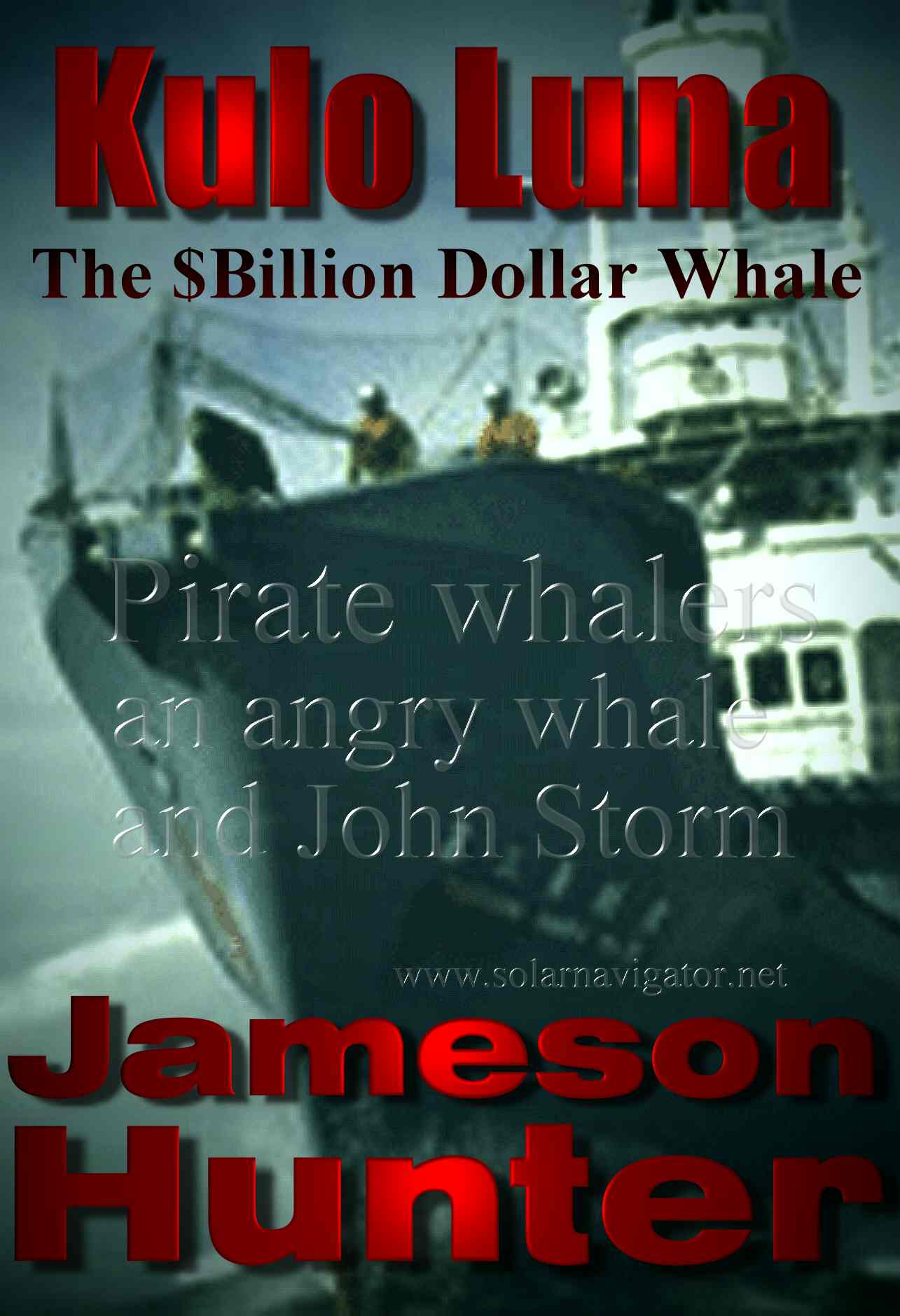
A
heartwarming adventure: Pirate
whalers V conservationists
|






